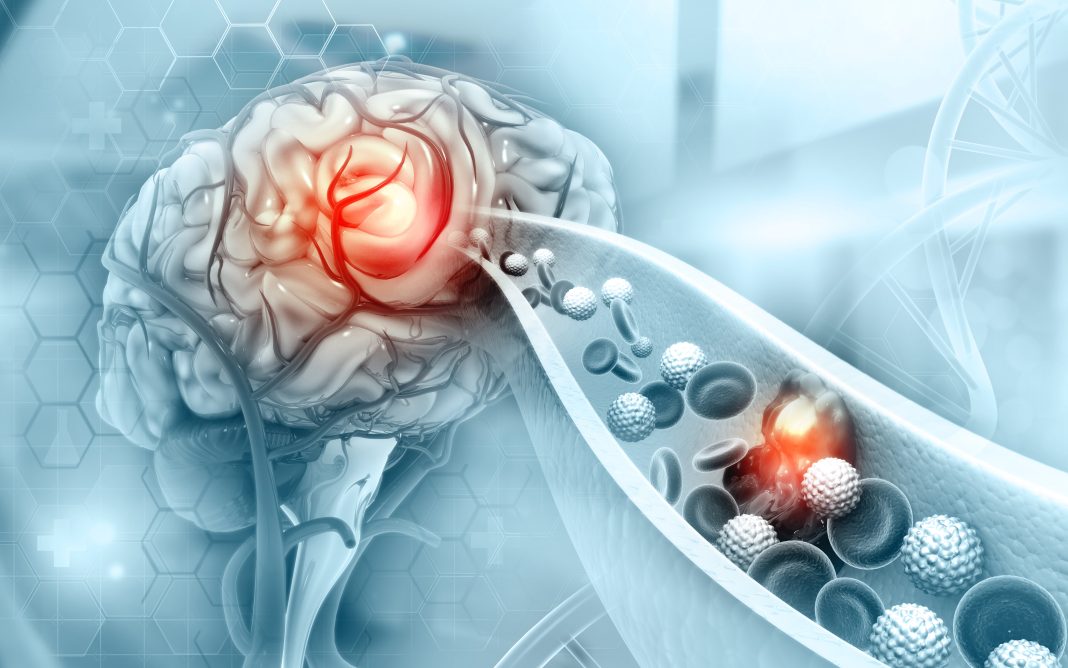Scientists at the Ohio State University report that gabapentin, currently prescribed to control seizures and reduce nerve pain, may enhance recovery of movement after a stroke by helping neurons on the undamaged side of the brain take up the signaling work of lost cells.
Their study (“Harnessing cortical plasticity via gabapentinoid administration promotes recovery after stroke”), carried out in mice and published in Brain, mimicked ischemic stroke in humans, which occurs when a clot blocks blood flow and neurons die in the affected brain region. Results showed that daily gabapentin treatment for six weeks after a stroke restored fine motor functions in the animals’ upper extremities. Functional recovery also continued after treatment was stopped, the researchers found.
“Stroke causes devastating sensory-motor deficits and long-term disability due to disruption of descending motor pathways. Restoration of these functions enables independent living and therefore represents a high priority for those afflicted by stroke. Here, we report that daily administration of gabapentin, a clinically approved drug already used to treat various neurological disorders, promotes structural and functional plasticity of the corticospinal pathway after photothrombotic cortical stroke in adult mice,” the investigators wrote.
“We found that gabapentin administration had no effects on vascular occlusion, hemodynamic changes, nor survival of corticospinal neurons within the ipsilateral sensory-motor cortex in the acute stages of stroke. Instead, using a combination of tract tracing, electrical stimulation, and functional connectivity mapping, we demonstrated that corticospinal axons originating from the contralateral side of the brain in mice administered gabapentin extend numerous collaterals, form new synaptic contacts and better integrate within spinal circuits that control forelimb muscles.
“Not only does gabapentin daily administration promote neuroplasticity, but it also dampens maladaptive plasticity by reducing the excitability of spinal motor circuitry. “In turn, mice administered gabapentin starting one hour or one day after stroke recovered skilled upper extremity function. Functional recovery persists even after stopping the treatment at six weeks following a stroke.
“Finally, chemogenetic silencing of cortical projections originating from the contralateral side of the brain transiently abrogated recovery in mice administered gabapentin, further supporting the conclusion that gabapentin-dependent reorganization of spared cortical pathways drives functional recovery after stroke. These observations highlight the strong potential for repurposing gabapentinoids as a promising treatment strategy for stroke repair.”
Gabapentin found to block protein activity
The Ohio State University team previously found that gabapentin blocks the activity of a protein that, when expressed at elevated levels after an injury to the brain or spinal cord, hinders re-growth of axons, the long, slender extensions of nerve cell bodies that transmit messages.
“When this protein is high, it interferes with neurological recovery,” said lead author Andrea Tedeschi, PhD, assistant professor of neuroscience, in the Ohio State’s College of Medicine.
“Imagine this protein is the brake pedal, and recovery is the gas pedal. You can push on the gas pedal but can’t accelerate as long as you’re also pushing on the brake pedal,” Tedeschi said. “If you start lifting the brake pedal and continuously press on the gas, you can really speed up recovery. We think that is gabapentin’s effect on neurons, and there is a contribution of non-neuronal cells that tap into this process and make it even more effective.”

The primary treatment focus after an ischemic stroke is re-establishing blood flow in the brain as quickly as possible, but this research suggests that gabapentin has no role at that acute stage: The recovery results were similar whether the treatment started one hour or one day after the stroke.
Instead, the drug’s effects are evident in specific motor neurons whose axons carry signals from the central nervous system to the body that tell muscles to move.
After the stroke in study mice, the researchers observed, that neurons on the undamaged, or contralateral, side of the brain began sprouting axons that restored signals for upper extremity voluntary movement that had been silenced by neuron death after the stroke. This is an example of plasticity, the central nervous system’s ability to fix damaged structures, connections, and signals.
“The mammalian nervous system has some intrinsic ability to self-repair,” said Tedeschi, also a member of the Ohio State’s Chronic Brain Injury Program. “But we found this increase in spontaneous plasticity was not sufficient to drive recovery. The functional deficits are not so severe in this experimental model of ischemic stroke, but they are persistent.”
Because a technique that temporarily silenced the new circuitry reversed behavioral signs of recovery, Tedeschi said the findings suggested the drug normalizes conditions in the damaged nervous system to promote cortical reorganization in a functionally meaningful way.
Compared to control mice that did not receive the drug, mice that received six weeks of daily gabapentin treatment regained fine motor function in their forelimbs. Two weeks after treatment was stopped, researchers observed, functional improvements persisted.
“This confirmed that functional changes are solidified in the nervous system,” Tedeschi said.
Gabapentin also appeared to have an effect in the stroke-affected brain on non-neuron cells that influence the timing of message transmission. An examination of their activity after the drug treatment suggested these cells can dynamically change their behavior in response to variations in synaptic communication, further enabling smooth sprouting of axons that were compensating for the lost neurons.
The team is continuing to study the mechanisms behind stroke recovery, but Tedeschi said the findings suggest gabapentin holds promise as a treatment strategy for stroke repair.


